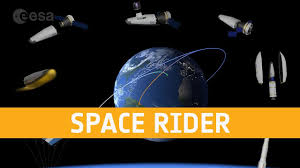
Breaking News
 LIVE ELECTION RESULTS: New York mayor, NJ & VA governor, Prop 50, Trump endorsements, latest vote
LIVE ELECTION RESULTS: New York mayor, NJ & VA governor, Prop 50, Trump endorsements, latest vote
 Sen. Markwayne Mullin Reveals Schumer Held Secret BACKROOM MEETING...
Sen. Markwayne Mullin Reveals Schumer Held Secret BACKROOM MEETING...
 RIP NYC - Muslim Communist Zohran Mamdani Wins New York City Mayoral Race
RIP NYC - Muslim Communist Zohran Mamdani Wins New York City Mayoral Race
 Dramatic Footage Shows UPS Cargo Jet Crashing At Louisville Airport
Dramatic Footage Shows UPS Cargo Jet Crashing At Louisville Airport
Top Tech News
 Japan just injected artificial blood into a human. No blood type needed. No refrigeration.
Japan just injected artificial blood into a human. No blood type needed. No refrigeration.
 The 6 Best LLM Tools To Run Models Locally
The 6 Best LLM Tools To Run Models Locally
 Testing My First Sodium-Ion Solar Battery
Testing My First Sodium-Ion Solar Battery
 A man once paralyzed from the waist down now stands on his own, not with machines or wires,...
A man once paralyzed from the waist down now stands on his own, not with machines or wires,...
 Review: Thumb-sized thermal camera turns your phone into a smart tool
Review: Thumb-sized thermal camera turns your phone into a smart tool
 Army To Bring Nuclear Microreactors To Its Bases By 2028
Army To Bring Nuclear Microreactors To Its Bases By 2028
 Nissan Says It's On Track For Solid-State Batteries That Double EV Range By 2028
Nissan Says It's On Track For Solid-State Batteries That Double EV Range By 2028
 Carbon based computers that run on iron
Carbon based computers that run on iron
 Russia flies strategic cruise missile propelled by a nuclear engine
Russia flies strategic cruise missile propelled by a nuclear engine
 100% Free AC & Heat from SOLAR! Airspool Mini Split AC from Santan Solar | Unboxing & Install
100% Free AC & Heat from SOLAR! Airspool Mini Split AC from Santan Solar | Unboxing & Install
ESA's reusable Space Rider capsule would carry equipment to orbit and back

Blue Origin and SpaceX have made reusable rockets a reality, and now ESA has outlined a reusable Space Rider capsule, which would carry scientific equipment to the edge of space and back several times over.
Space Rider has its roots in ESA's Intermediate Experimental Vehicle (IXV), which performed a successful flight and re-entry test in 2015. The new capsule builds on that proof of concept, by adding a multi-purpose cargo bay that opens to space, landing gear for when it returns to Earth and a design that's been upgraded to ensure it can make the return trip at least five more times.
The capsule would be launched atop a Vega-C rocket and attached to an AVUM+ upper stage unit, which provides 600 watts of power and steers the craft once it's in orbit. The cargo bay can carry up equipment up to a maximum weight of 800 kg (1,763.7 lb) or volume of 1,200 liters (317 gal). The craft can then rotate itself depending on where the scientific payload needs to be pointed – it could for example, fly upside down if the equipment is intended to study the Earth, or sideways if the target is out in space.



